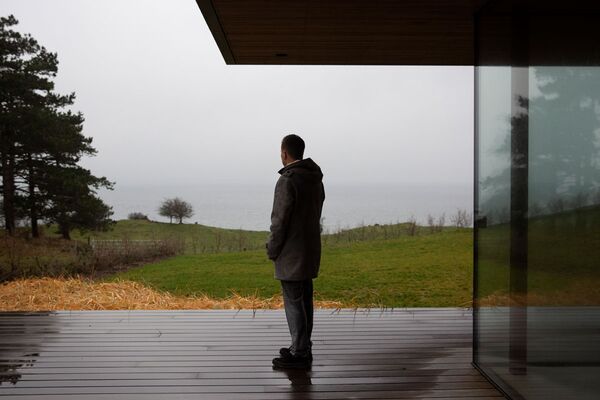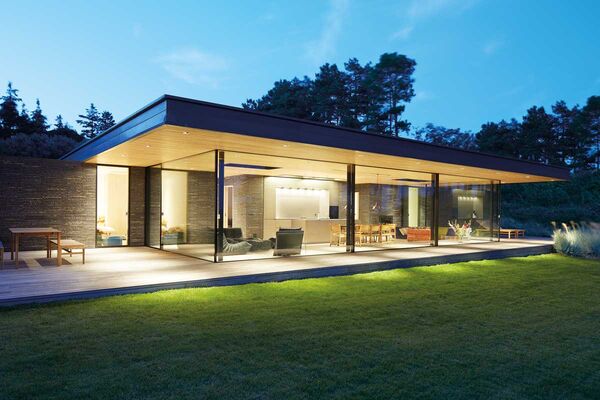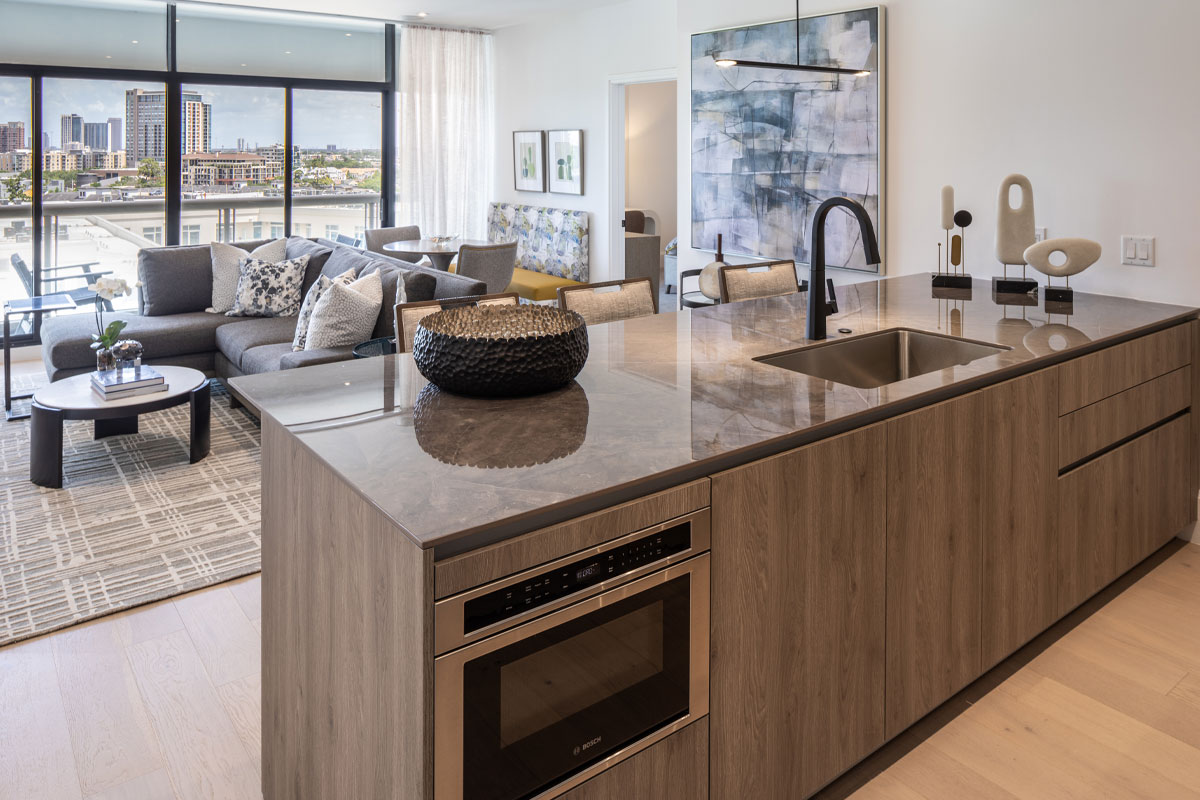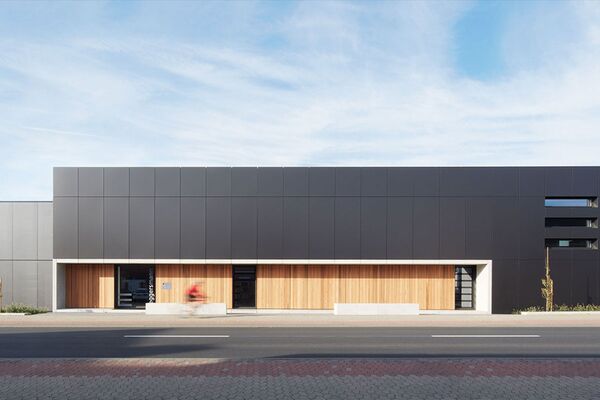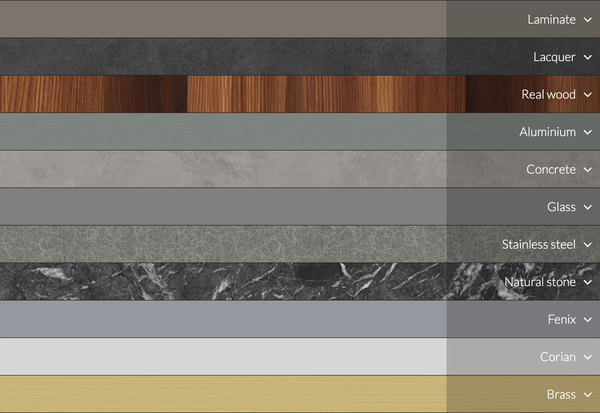
Constantly reinventing the kitchen – that is eggersmann's mission. The latest product of this passion is “nami,” which was developed together with the New York design studio YabuPushelberg. A conversation with the two founders – about the next level of kitchen design.
Photos: Joachim Grothus, YabuPushelberg | Interview: Oliver Geyer
How did your office come to be and what other major companies and big-name brands do you work for?
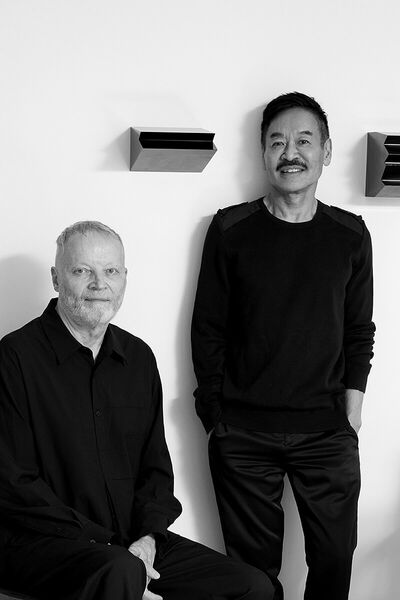
Glenn Pushelberg:
We started off 22 years ago, when we were two years old (laughing). No, seriously, we got started together shortly after school – as a simple product design office. Today we design furniture for a wide variety of international brands, including Molteni, Salvatori Bathroom, Glas Italia and Tribù. So we can boast a lot of great names. How this came about: We both come from Canada, and a few years ago we started recruiting colleagues from there who specialize in industrial design. They always did a great job, but then production in Canada was cut back a lot. So, we were able to persuade some talented people to come join us in New York City. When we showed our work to various producers in Europe, it was well received. In fact, it literally spread like wildfire.
George Yabu:
It is already a major challenge to convince the Europeans, especially the Italians. The design industry there is pretty much a closed circle. And it’s difficult for a supplier from the US to enter this market. So we are very lucky to have won them over, although we were a bit naive in our approach.
Glenn Pushelberg:
(laughs) That was exactly the right way to go, though, George!
How did the cooperation between you and eggersmann come about?
Glenn Pushelberg:
Michael Wunram and Michael Brinkjost from eggersmann visited us at our office in New York and proposed developing a kitchen together. I didn’t hesitate for a moment and thought: This is a great idea! We hit it off right away. So, the plan was quickly put into action.
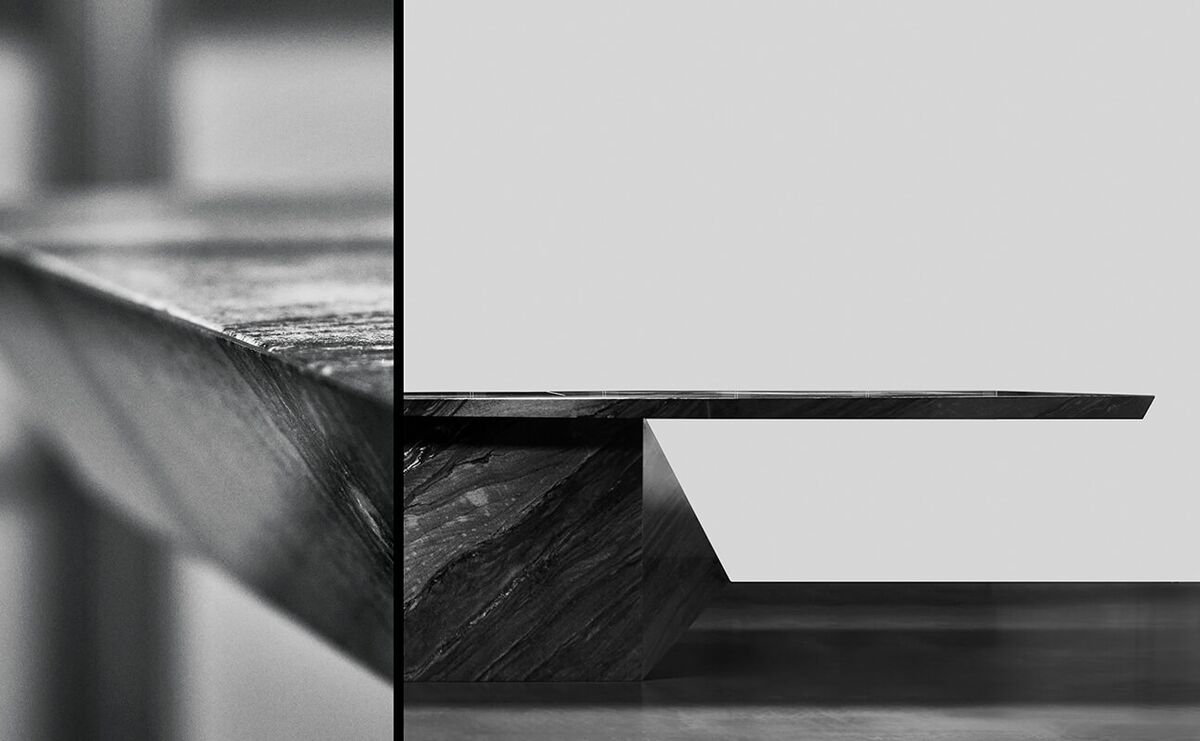
George Yabu:
It was interesting because their DNA matched ours, so to speak. I immediately saw how passionate they are about engineering and extremely high-quality workmanship. It was all incredibly impressive. My idea was that we could add something to eggersmann’s quest for perfection: I wanted to enhance this precision and attention to detail with an artistic touch that transforms the island in particular into a sensation.
eggersmann produces high-end technology, for example with the perfect combination of pull-outs and intricate natural stone fronts. But they are still quite smooth-running! This engineering is really impressive – it’s like magic. With nami, we wanted to enhance the artistic, intuitive effect. It was a great fit for the work we’ve been doing internationally for a few years in the area of home and furniture.
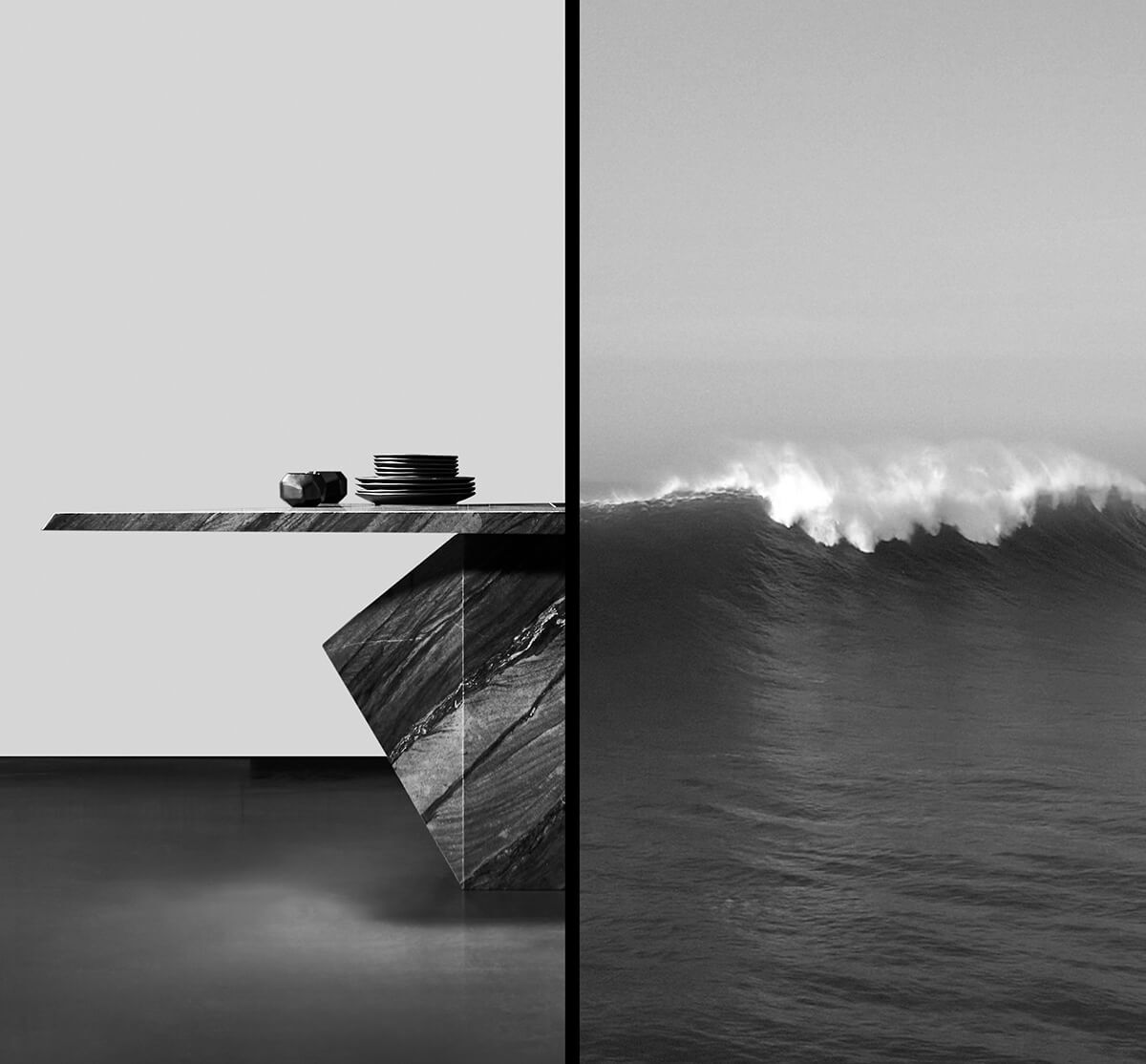
How did the collaboration go? Was the chemistry right?
Glenn Pushelberg:
Yes, definitely. There is a generosity of spirit at eggersmann. Despite its international success, the company is still a family business, staffed by kitchen enthusiasts for whom the subject is a real matter of the heart. This plays an important role for us. When it comes to working with large corporations, we sometimes find it a little difficult. There is usually little trust in one’s own gut feeling, but rather decisions are made strictly according to marketing strategy. And there are always a lot of people who want to have a say. Family businesses like eggersmann are a better fit for us because they have this classic entrepreneurial character, simply daring to take the next step. We also had the privilege of working on projects in many parts of the world. As a result, we now have a good understanding of how work is done in different cultures. When it comes to kitchens, things get especially interesting: I get the impression that Europeans are practically the last people in this world who still actually cook.
George Yabu:
(laughs) I don’t think that’s true.
Glenn Pushelberg:
Wait a minute, George ... the young generation in America leads an extremely efficiency-oriented life and therefore basically just warms up their food instead of cooking time-consuming meals. The selection of ready-to-eat meals there is impressive. Or people go straight to a restaurant. In Asia, however, if you are upper-middle or upper class, you have domestics. Then you have a working kitchen in which they cook for you. In addition, there is a show kitchen, which serves completely different purposes. So internationally, the significance of the kitchen has changed a lot. It has become a place that is increasingly about people coming together. For example, to have the first coffee together in the morning, or to have a drink before dinner. All this needs to be taken into account when designing contemporary kitchens today.
In view of these changes, did you make a conscious effort to go one step further? You have created something that no longer looks like a classic kitchen.
George Yabu:
We were inspired by two things for this. One was in fact art. We wanted to create an expressive kitchen, which in terms of its presence and charisma is like a work of art, like a sculpture.
It was to be a kitchen that is very functional but does not look like it at first sight.
It should not dominate the room, but neither should it disappear. To achieve this, we designed this sculptural island, as well as a cabinet that reveals rather than conceals, with sliding doors making it highly versatile. The other inspiration was the aforementioned habit of people today gathering at the kitchen counter before and after meals or for whatever occasion. Therefore, “nami” is still a kitchen, but the actual functional island is evolving more into a bar.
Glenn Pushelberg:
… or a counter for a quick breakfast. We have recently been working for various larger residential projects, for example in Tokyo and Hong Kong. We’re talking about high-priced lofts that offer a lot of space. People tend to have their working kitchen in the background, more hidden. But up front, in the show kitchen, it’s more and more about that bar character. That’s why kitchen islands are increasingly becoming design objects. We wanted to design something that immediately appeals to us. Because it’s different.
George Yabu:
Exactly. We didn’t want an iconic dark slab. We were very focused on the psychology of the object – how people face each other there: the guest on one side and the host on the other. It was important to us to achieve a greater openness between hosts and guests, which promotes conversation between both sides. The object should be dynamic. In other words, the guests should feel welcome to go to the other side as well and not just stay on their own side, like at the counter in a café. In this way, we have created an island that we believe connects people even more.
Glenn Pushelberg:
You said it!
George Yabu:
People circle around this object and are attracted to it. And for the same reason – because the island looks more inviting and integrating – it does not dominate the space so much.
According to nami’s product description, you wanted to create a kitchen design that evolves with people’s lifestyles. What do you mean by that?
George Yabu:
“nami” means “wave” in Japanese. The first thing that comes to mind, of course, is an ocean surge. And the opening and closing of the sliding doors in the background is also reminiscent of the changing tides, which, in the case of a kitchen, corresponds with the constantly changing need for space. But this can be interpreted in another way: Nowadays, many social changes are also like waves. Each of us experiences in everyday life how former routines are being replaced with a multitude of new constellations. This is also something we want to express.
Glenn Pushelberg:
This wave becomes very specific when we have a private evening reception here in New York and sometimes over a hundred people come. Then the kitchen becomes a kind of buffet, as known from the restaurant trade.
Is only the name Japanese-inspired, or also the design?
George Yabu:
No, we chose the Japanese name primarily because it seems really appropriate in terms of content. However, what is true is that the island actually looks like something that came out of the earth – like a rock. In Japanese design, there are often these references to natural phenomena and organic forms. But we have taken this rock and formed something out of it: a shape that is meant to bring joy, that attracts and connects people.
“This engineering is really impressive – it’s like magic. With nami, we wanted to enhance the artistic, intuitive effect.”
George Yabu
What is your design philosophy, and how did you apply it to eggersmann with nami?
Glenn Pushelberg:
We have a great appreciation for craftsmanship and authenticity. I think in the case of nami, we have indeed created a special mix of German engineering and a certain Japanese design influence or aesthetic. The two blend together really well here. Although I have to say that I can definitely see clear similarities between the Japanese and German approaches. In both cases, there is this great striving for perfection.
International design studio Yabu Pushelberg is dedicated to creating outstanding design experiences and brand identities. Through their integrated approach encompassing ideation, design and curation, founders George Yabu and Glenn Pushelberg have established themselves as leaders in a wide variety of design areas. Their Toronto and New York offices now offer the full range – from architecture and landscape architecture through interior design, lighting, furniture, textiles, branding and graphics. With this comprehensive concept, Yabu Pushelberg is redefining modern luxury around the world.
ANOTHER DIMENSION OF KITCHEN
We are always ready to break new ground for our customers’ individual wishes. So, there is a lot to show and tell.
